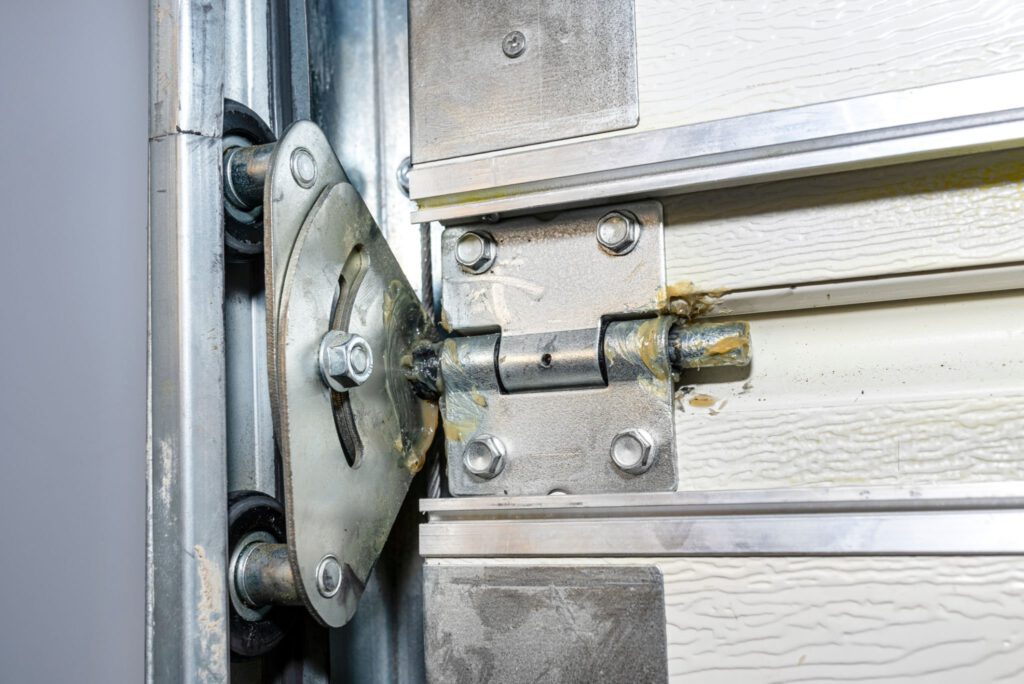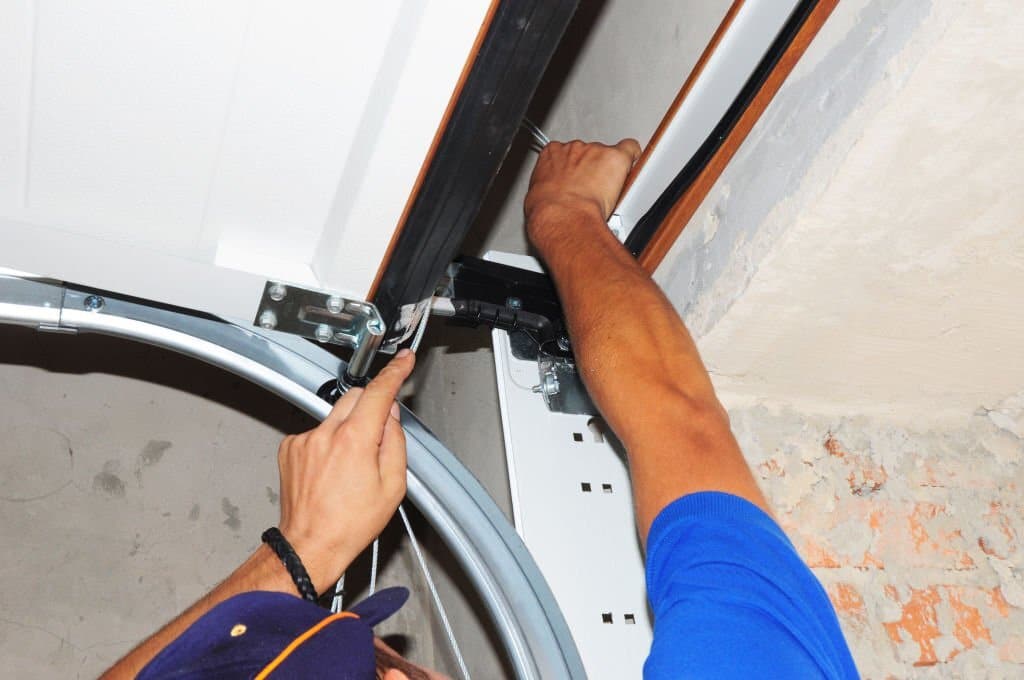If your garage door squeaks, grinds or moves slowly, it’s not just annoying; it’s telling you it needs some TLC in the form of good oil! Giving your garage door the care it needs makes sure it works perfectly and greatly extends its life, protecting your investment and giving you peace of mind. Because your garage door always opens and closes, its working parts need to be oiled every so often to prevent wear and tear and the constant friction that comes with movement.
That’s where our step-by-step guide comes in. It was carefully made to walk you through the simple but important process of greasing and performing garage door repair efficiently. No matter how experienced you are with do-it-yourself projects or how new you are to maintenance tasks, our guide will make it clear, easy, and stress-free to keep your garage door in good shape!
Why is garage door lubrication important?
When it comes to maintaining your garage door, lubrication is a crucial step that should not be overlooked, just like timely garage door repair. Proper lubrication ensures that all the moving parts of your garage door work smoothly, reducing friction and preventing unnecessary wear and tear. It also helps extend your garage door’s lifespan and prevents costly repairs down the line. Regular lubrication can make a significant difference in the performance and longevity of your garage door system.
Understanding the different parts of a garage door
Before we delve into the specifics of lubricating and performing routine maintenance on your garage door, it’s essential to understand its different parts, including tracks, springs, and rollers. The tracks guide the door’s movement, while the springs provide the necessary tension to support its weight. The rollers, however, allow for smooth and effortless opening and closing of the door, contributing to your garage door’s overall function and longevity. Regular maintenance is crucial for preventing issues and ensuring the optimal performance of your garage door. If you encounter any issues, consider seeking professional assistance for efficient garage door repair.
Choosing the best garage door lubricant
Now that you understand the importance of lubricating your garage door, let’s discuss choosing the best lubricant for the job. When selecting a garage door lubricant, opting for a product specifically designed for this purpose is important. Avoid using general-purpose oils or greases, as they may not provide the necessary protection and can attract dust and debris. Look for a lubricant specifically formulated to withstand the harsh conditions of a garage environment, such as extreme temperatures and moisture. Also, choose a non-corrosive lubricant that doesn’t leave behind a sticky residue.
Step-by-step guide to lubricating your garage door
Now that you have chosen the best garage door lubricant let’s walk through the step-by-step process of effectively lubricating your garage door. Follow these instructions to ensure optimal performance and longevity of your garage door system.
Step 1: Lubricating the garage door tracks
Start by thoroughly cleaning the garage door tracks using a brush or vacuum cleaner. Remove any dirt, debris, or old lubricant that may have accumulated over time. Once the tracks are clean, apply a small amount of lubricant along the length of each track. Use a rag or a brush to spread the lubricant evenly and ensure it covers the entire surface. Be careful not to apply too much lubricant, as it can attract additional dirt and cause the tracks to become clogged.
Step 2: Lubricating the garage door springs
Next, move on to lubricating the garage door springs. These springs are under high tension and can be dangerous if mishandled. It is recommended that professional assistance is sought for lubricating the springs. However, if you choose to do it yourself, exercise extreme caution. Apply a small amount of lubricant to each spring, focusing on the areas where the coils rub against each other. Be sure to use a lubricant specifically designed for garage door springs, as it will provide the necessary protection and prevent premature wear.
Step 3: Lubricating the garage door rollers
The final step is to lubricate the garage door rollers. Start by opening the door halfway and securing it with clamps or locking pliers. This will prevent the door from accidentally closing while you work on lubricating the rollers. Apply a small amount of lubricant to each roller, ensuring that it reaches all moving parts. Use a rag or a brush to spread the lubricant evenly, covering the roller bearings and the shaft. Once all the rollers are lubricated, move the door up and down a few times to distribute the lubricant evenly and ensure smooth operation.

Common mistakes to avoid when lubricating your garage door
While lubricating your garage door, it’s important to avoid certain common mistakes that can compromise the effectiveness of the lubrication process. Here are a few key mistakes to avoid:
- Over-lubricating: Applying too much lubricant can attract dirt and debris, causing the tracks and rollers to become clogged. Use a small amount of lubricant and ensure even distribution.
- Using the wrong lubricant: Avoid using general-purpose oils or greases that may not protect adequately or attract dust and debris. Choose a lubricant specifically formulated for garage doors.
- Neglecting regular maintenance: Lubrication should be a part of your regular garage door maintenance routine. Ignoring this crucial step can lead to premature wear and costly repairs.
Signs that your garage door needs lubrication
Now that you know how to effectively lubricate your garage door, it’s important to be aware of the signs that indicate your garage door needs lubrication or potential garage door repair.
Here are some common signs to watch out for:
- Noisy operation: If your garage door is making grinding or squeaking noises when opening or closing, it’s a clear indication that it needs lubrication.
- Stiff or jerky movement: If your garage door is not opening or closing smoothly, it may be due to a lack of lubrication. Lubricating the moving parts can help restore smooth operation.
- Excessive vibrations: If you feel excessive vibrations when operating your garage door, it may be a sign that the moving parts are not adequately lubricated. Lubrication can reduce friction and minimize vibrations.
Maintenance tips for keeping your garage door lubricated
To ensure the longevity and optimal performance of your garage door, here are some maintenance tips to keep it properly lubricated:
- Regularly inspect and clean the tracks, springs, and rollers, including addressing any necessary garage door repair, to remove any dirt or debris that may interfere with the lubrication process.
- Apply lubricant to the moving parts of your garage door at least once a year or as needed. Be sure to use a high-quality lubricant specifically designed for garage doors.
- Avoid using excessive force when opening or closing your garage door, as it can put unnecessary strain on the moving parts and require more frequent lubrication.
Conclusion: Choose Tarrant County Door & Gate
Proper lubrication is essential for maintaining the performance and longevity of your garage door. Following this step-by-step guide and avoiding common mistakes ensures that your garage door operates smoothly and efficiently. Remember to choose the best garage door lubricant and regularly inspect and maintain your garage door for optimal results. For professional assistance with your garage door repair services in Tarrant County needs, choose Tarrant County Door & Gate. We are experts in garage door installation, repair, and maintenance and are committed to providing top-quality service. Contact us today for all your garage door needs.

